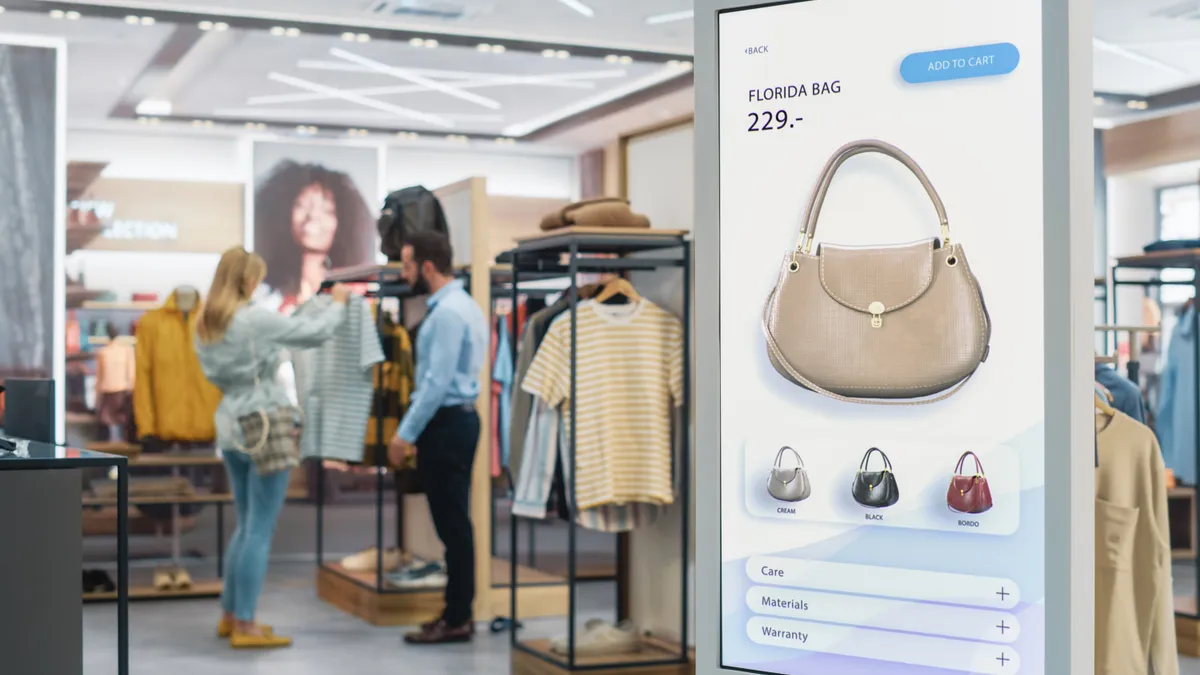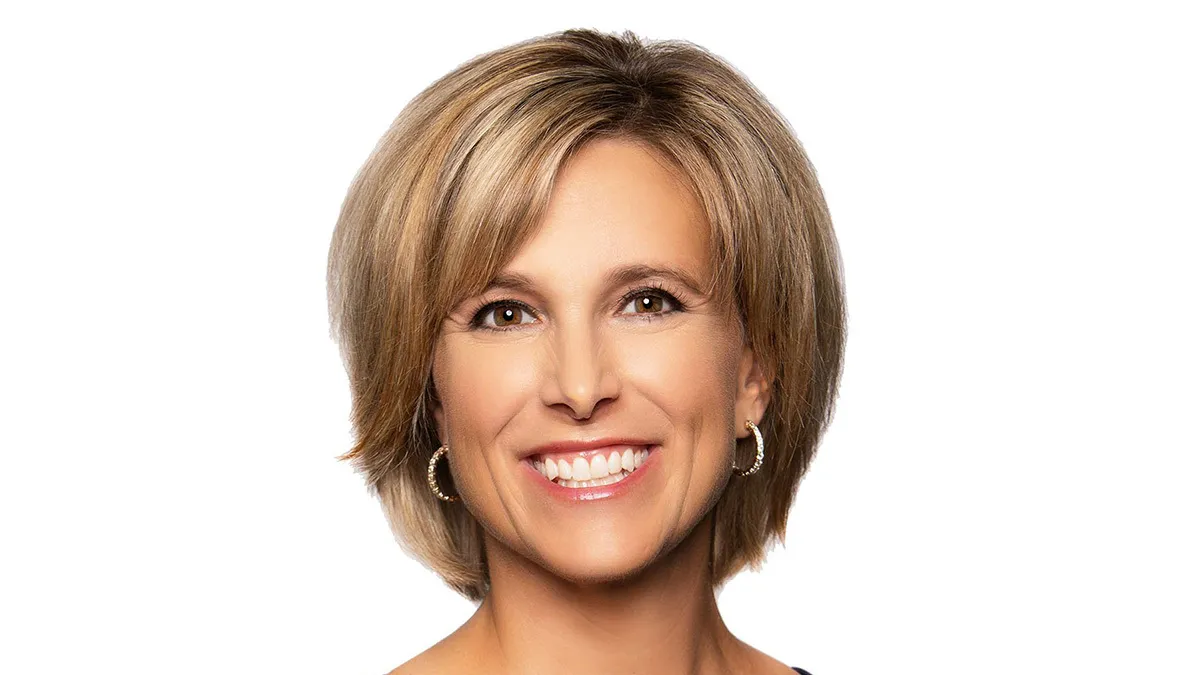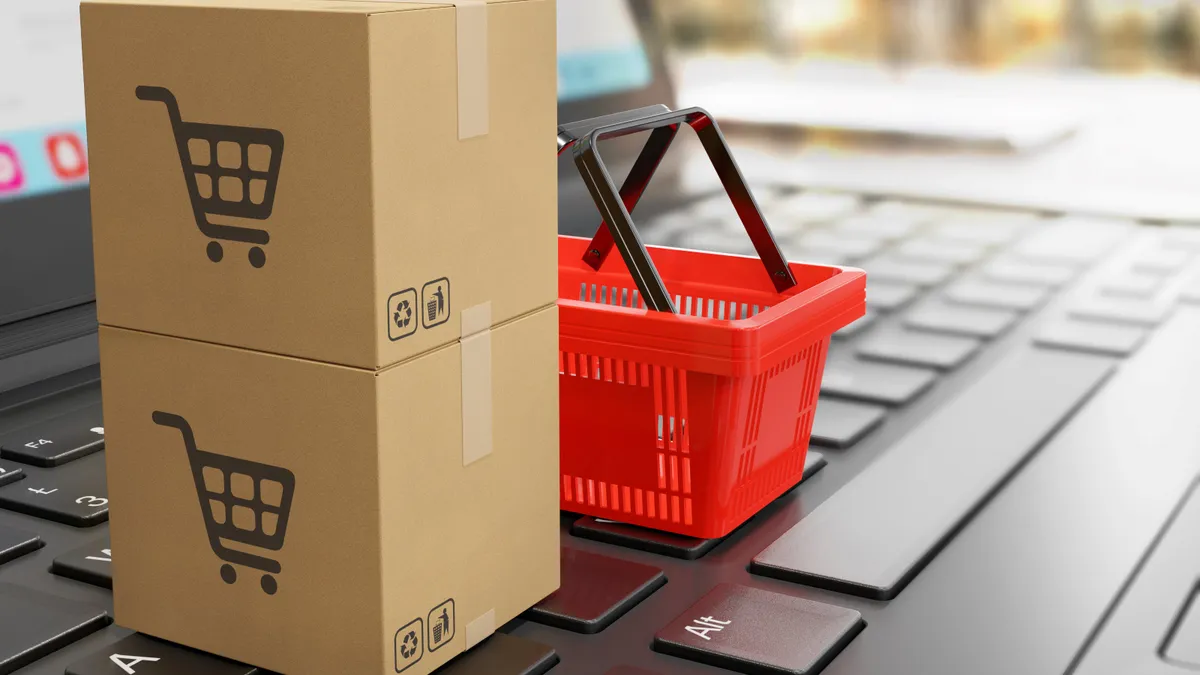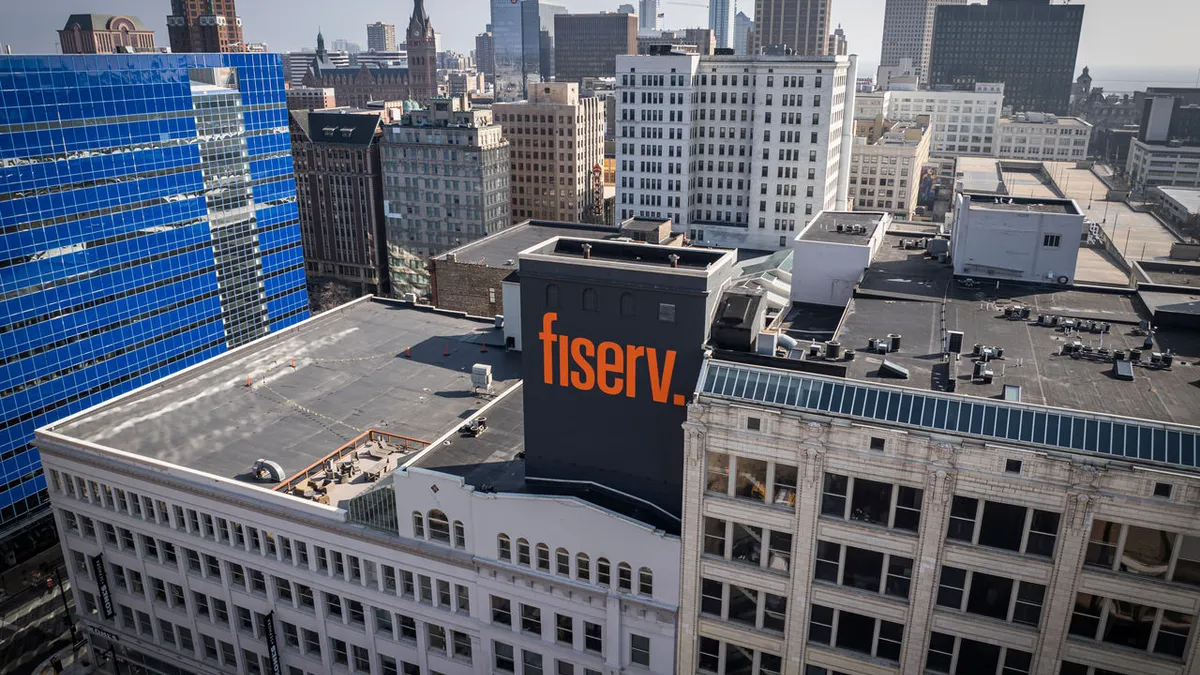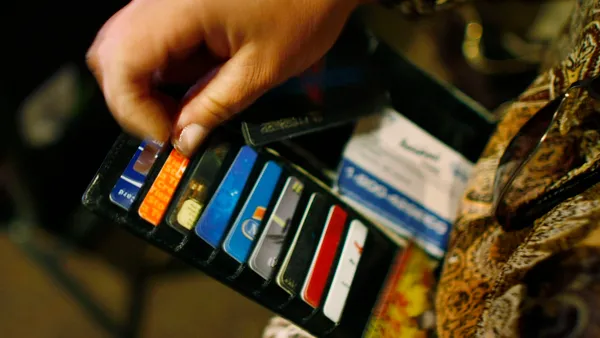For U.S. merchants butting heads with card networks over card swipe fees, the answer might be to bypass cards altogether and allow funds to move directly from the payer to recipient via account-to-account payments — the so-called pay-by-bank method.
The problem is that it’s far from catching fire among U.S. consumers.
Account-to-account payments have been around for decades. They’ve gained only limited momentum in recent years in the U.S. because the alternative — cards — have high transaction fees; increased adoption of pay-by-bank in other countries; and the launch of faster payments systems like FedNow and RTP, according to industry consultant Peter Tapling.
U.S. adoption has been slow because faster payments haven’t been rolled out at in-store retail checkouts, and consumers haven’t (yet) felt a compelling enough reason to ditch their cards, say merchants and industry analysts. But merchants may still want to make this happen to avoid steep card swipe fees.
Low-hanging fruit: rent, utilities and e-commerce
Pay-by-bank efforts in the U.S. have so far focused on uses that don’t involve physical retail checkouts. Adoption will likely come from cases where ACH or check payments are already common, said Ashley Cornall, payments product manager at Plaid, which enables pay-by-bank transactions.
“The point of sale is not the initial place where it will start,” said Cornall. “People are already paying by bank. The most common one is bill-pay.” The focus is now to make that process smoother for the user, including not having to manually type account information each time.
Retail uses outside of the physical point-of-sale handled by Plaid include high-value digital payments to merchants at Tesla and Rivian, or low-margin businesses with a high volume of transactions.
Banks and card networks are also getting into the “pay-by-bank” business. J.P. Morgan, partnering with Mastercard through its open banking technology, first piloted pay-by-bank solutions in 2022, taking it live in 2023 for rent, utilities, healthcare and other use cases. J.P. Morgan and Mastercard declined to be interviewed on the service.
Credit card issuers typically charge merchants 1.5% to 3.5% of transactions in interchange fees, and the cost for pay-by-bank can be considerably lower, companies said. Plaid charges a success fee if they provide authentication or risk services associated with a payment.
Once the money moves via Plaid or another processor, the merchant pays the processor a fee to complete the transaction. The company estimates that the transaction costs for pay-by-bank payments through Plaid can be approximately two to four times cheaper than cards.
Mastercard plans to expand use cases and verticals in the U.S., possibly tapping real-time payment rails, CEO Michael Miebach noted during the company’s fourth-quarter earnings webcast last week.
“The open banking connectivity enables us to go after use cases that we otherwise wouldn't be able to go after,” he said. There is additional data available that can be combined “with an underlying RTP rail to make a profitable proposition for a customer, which is exactly what Chase pay-by-bank is,” Miebach explained.
For its pay-by-bank solution, Mastercard levies a per-click fee related to the API call, which is a messaging request, CFO Sachin Mehra said previously, on the company's third-quarter earnings webcast in October. API call refers to a messaging request sent to a server.
Mastercard did not comment on the mechanics of the per-click fee. In the industry, a per-click fee could be a transaction fee, or a fee paid each time a customer makes a service request, including an API call, Tapling said. He added that he has no knowledge of Mastercard’s pay-by-bank pricing model.
“Given [that] pay-by-bank is a nascent market, all indications are that it will grow substantially,” he said.
The point-of-sale conundrum
Pay-by-bank point-of-sale payments are common in other countries, including India and Brazil, where real-time payment systems UPI and Pix, respectively, have generated wide consumer adoption for everyday transactions.
Pay-by-bank may be a tough sell for American consumers who are accustomed to using cards, spreading out repayment periods and receiving card-linked rewards, said Neil Saunders, managing director for retail at consulting firm GlobalData.
Also, credit card dispute resolution processes may protect consumers who experience fraud, he added.
“For retail payments, it will categorically not be a big thing,” Saunders said. “A lot of people pay by credit card because they feel the credit card company offers a layer of protection. If there's fraud or if the goods don't arrive, they can go to the credit card company and say, ‘Look, can you sort this out?’”
With no commonly accepted dispute resolution mechanisms, a consumer using pay-by-bank may have no other option than to dispute the transaction with the merchant, said Tapling. (Under Regulation E of the Electronic Fund Transfer Act, consumers have 60 days to appeal unauthorized ACH transactions.)
Industry participants will need to develop a way forward, suggests Cornall.
“It needs to be solved centrally in some way,” she said. “Maybe it’s banks collectively, maybe it’s regulators, maybe it’s Nacha…there needs to be some predictable way for consumers to know for sure that there’s some resolution if something goes wrong.”
Real-time payments boost
Others say the lack of availability of real-time rails, including RTP and FedNow, makes a checkout experience through pay-by-bank clunky for retailers and consumers.
“Real-time payments ought to be available at the point of sale — it's just a matter of banks allowing that to happen,” said Doug Kantor, general counsel of the National Association of Convenience Stores and an executive committee member at the Merchants Payments Coalition. “Lots of consumers like to pay directly from the bank account, whether it's for budgeting reasons or otherwise and we should make it easy for them.”
Banks aren’t required to use the Federal Reserve’s new instant payments system FedNow and so far, adoption has been slow. For the RTP network, operated by the bank-owned The Clearing House, retail checkouts have not yet been enabled, but it is on the roadmap of future use cases, said James Colassano, senior vice president of product management and strategy at the Clearing House.
“We're starting with what we call a permissible set of use cases, and that includes bill-pay, some brokerage to account funding, me-to-me transactions and business-to-business transactions,” he said.
Retail checkouts weren't deemed to be a low-risk use case for the initial rollout, he added. Part of the challenge with enabling RTP at checkouts is a design problem because payees have to send a request for payment that the payor must authorize.
In countries where pay-by-bank has gone mainstream, mandated open banking and a standardization of the user experience — including formats for QR codes to be scanned at pay-by-bank checkouts — make it easy for consumers, Tapling said.
“In a world where you have legislated open banking — where everyone's using the same APIs and every bank needs to make those APIs available, and you have instant payments…[the] infrastructure can get built up that enables that instant payment transaction to happen,” he said. “In the U.S., we love to look at all these other countries and say ‘Wow, look at what they're doing. It’s wonderful. But here, we don't agree on any of that.’”
For now, some say using ACH might be the best path to grow adoption.
“For digital payments, there are use cases [where] real-time payments may not work well, such as any payment where a pre-authorization is required,” said Charles Williams, vice president and general manager of alternative payments at Fiserv. “We believe the best pay-by-bank solution utilizes ACH for ubiquity and can take advantage of real-time networks as it makes sense, depending on the payment use case as well as consumer and bank adoption.”


